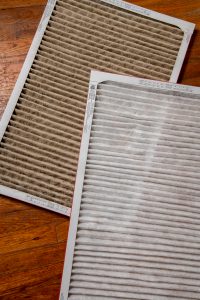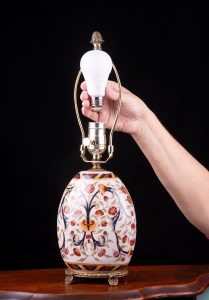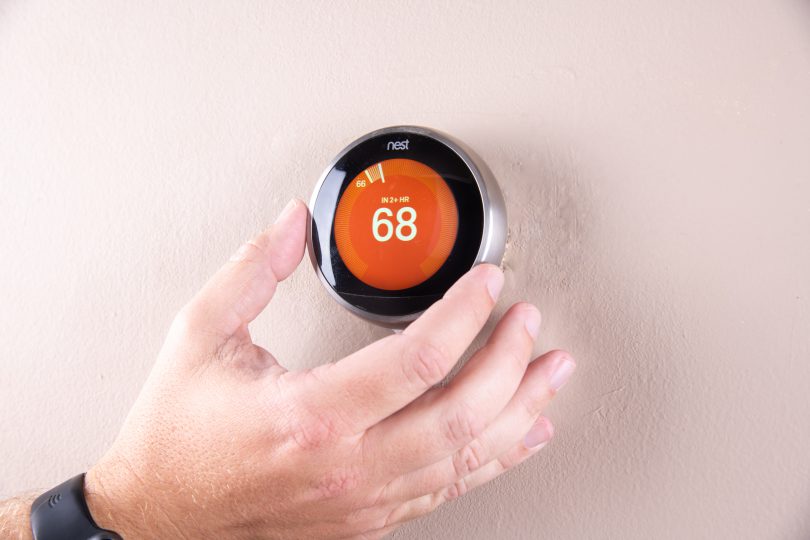By Miranda Boutelle
For the average household, seeing a big difference on your home energy-saving measures depends on your home’s efficiency and your habits. Your energy use is based on your home’s equipment and how you use it. You might already have an efficient home and good energy use habits, or you might have room for improvement.
Energy keeps us comfortable in our homes, and our monthly bill is the associated cost for this energy use. To make energy-saving measures work in your home, it comes down to preventing energy waste while maintaining personal comfort in your home.
Get back to the basics to see if you can find opportunities to save energy in your home. Filters, LEDs and thermostat settings are great places to start.

A dirty air filter will cost you more in heating and cooling costs. Photo Source: Mark Gilliland, Pioneer Utility Resources
Replace filters.
If your home has a forced-air system, you have a filter. The filter needs to be checked regularly and replaced when it’s dirty. A dirty filter can cause heating and air-conditioning systems to use 15% more energy, according to the U.S. Department of Energy.
Since heating and air conditioning make up almost half of your energy use, replacing your filter when it looks dirty is a habit that can reduce energy waste.

Update your lighting to LEDs for a low-cost, simple way to save energy. ENERGY STAR®-rated LEDs use up to 90% less energy. Photo Source: Mark Gilliland, Pioneer Utility Resources
Upgrade to LEDs.
Upgrading your lighting to LEDs is a simple, low-cost way to cut energy use. Depending on your budget, you can do it all at once or change bulbs out over time. If you are going to replace a few at a time, prioritize the lights you use the most.
There are many LED options available. One major variation is the color temperature, which is listed on the packaging in Kelvin. Bulbs that are 2700K are similar to incandescent lighting. ENERGY STAR®-rated products are ideal because they meet strict quality and efficiency standards, use up to 90% less energy and last 15 times longer than standard bulbs.
Adjust your thermostat.
It’s amazing how much difference a few degrees can make. By adjusting your thermostat to your home habits, you can save year-round on heating and cooling costs.
For winter months, the DOE recommends setting your thermostat to 68 degrees when you are home and dialing it back 8 to 10 degrees when you leave the house or go to sleep. For summer, the recommendation is 78 degrees when you are home and 8 to 10 degrees warmer when you are away. Using a programmable or smart thermostat will allow you to set it according to your schedule.
Making these small changes in your routine will help improve your energy efficiency while maintaining comfort in your home.
Miranda Boutelle of Efficiency Services Group writes on energy efficiency topics for the National Rural Electric Cooperative Association, the national trade association representing more than 900 local electric cooperatives. From growing suburbs to remote farming communities, electric co-ops serve as engines of economic development for 42 million Americans across 56% of the nation’s landscape. For additional energy tips and information on Collaborative Efficiency visit: collaborativeefficiency.com/energytips.

